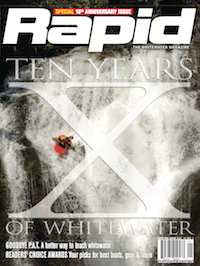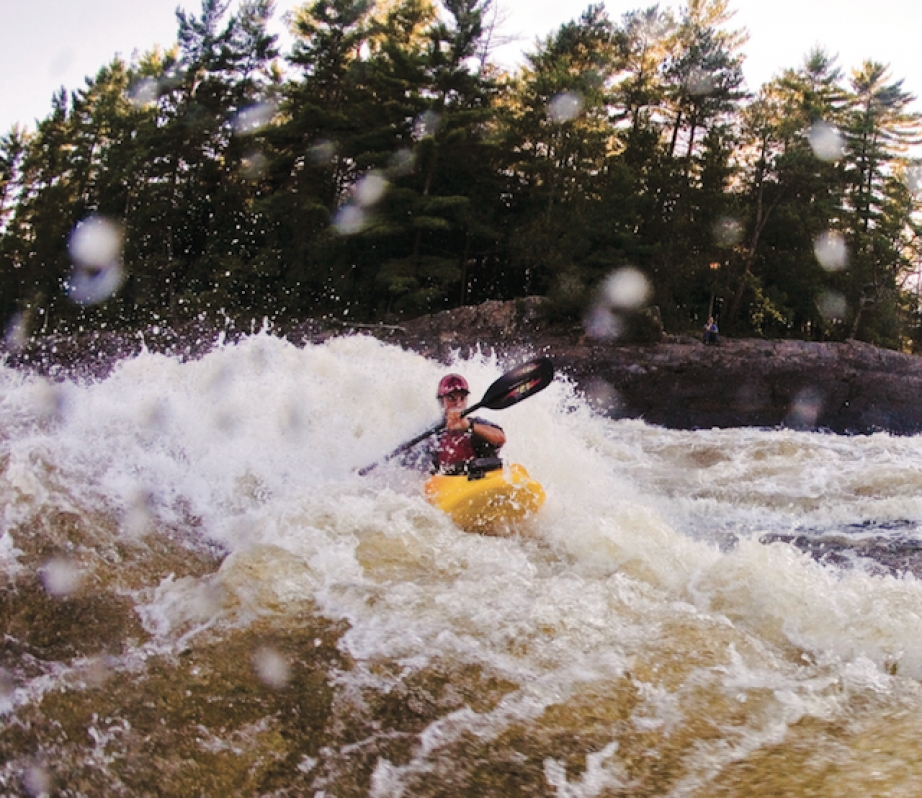Attempting class IV and V whitewater is an exciting and major step in a paddler’s progression, best carried out under the tutelage of good mentors and skilled paddlers. As this transition can be one of the most difficult and potentially dangerous periods of a kayaker’s development toward more advanced challenges, good advice and quality instruction can save you some hard knocks. In my own paddling career, I had the good fortune of having a mentor in Oregon kayaking pioneer Eric Brown. From paddling with Eric I learned some of the most important river-running tips—tips I rely on whenever I am most concerned with paddling the cleanest lines.
Keep Your Eyes on the Prize
The bigger the water and the longer the rapids, the more forces there will be to push you off your line. Keeping your eyes ahead of the next move, or ideally two or three moves ahead, will allow you to better anticipate what’s coming next and have well-planned, and therefore, better-placed strokes. Steeper water moves faster so the habit of looking ahead to identify where you want to go will in essence slow things down, giving you more time to react. Combine this with sound paddle technique, namely keeping an entire blade in the water and good forward stroke mechanics and you have potentially the most important skill for tackling higher gradient.
Keep Your Strokes Forward
One of the most common sights instructors see when introducing kayakers to more advanced whitewater is the classic deer-in-the-headlights effect. This phenomenon is easily identified by a tense, uncertain or fearful expression, slight paddle dips from a horizontally oriented paddle, and a slouched or stiffened torso, depending on the paddler’s level of anxiety. Maintaining a good forward stroke, planted well forward, forces you into an aggressive stance. Extending your forward-reaching hand by opening your torso further streamlines your body toward oncoming whitewater, allowing you to punch holes and waves more effectively. It also puts your paddle in the ideal position to be planted into the downstream current.
Mind the Prerequisites
Take note that the first step mentioned is the presence of a skilled mentor or instructor. Find someone you trust to introduce you to big whitewater, but more importantly, find someone who really knows how to paddle. It should be a given that if a kayaker has good technique, he or she has put the time in to develop that technique, and will have the experience to show you the ropes safely. Beware of the self-proclaimed expert; take a look at their resume first! If you need to, hire a good instructor. Their dedication to the sport will assure that you are getting good feedback. Sequentially, make sure your technique is sound and that you have the experience to move up in class, not just the guts. Making subtle improvements to your forward stroke should be an obsession and perfecting new strokes should always be a consideration. Finally, to do it right, paddle flat-water or slalom gates in your creek boat or river runner to develop technique and control. This is especially true if you are a weekend warrior or need to mentally and physically prepare for a tough run, but nothing besides the real thing can provide for a more appropriate workout, or headspace.

This article first appeared in the Spring 2008 issue of Rapid Magazine.




